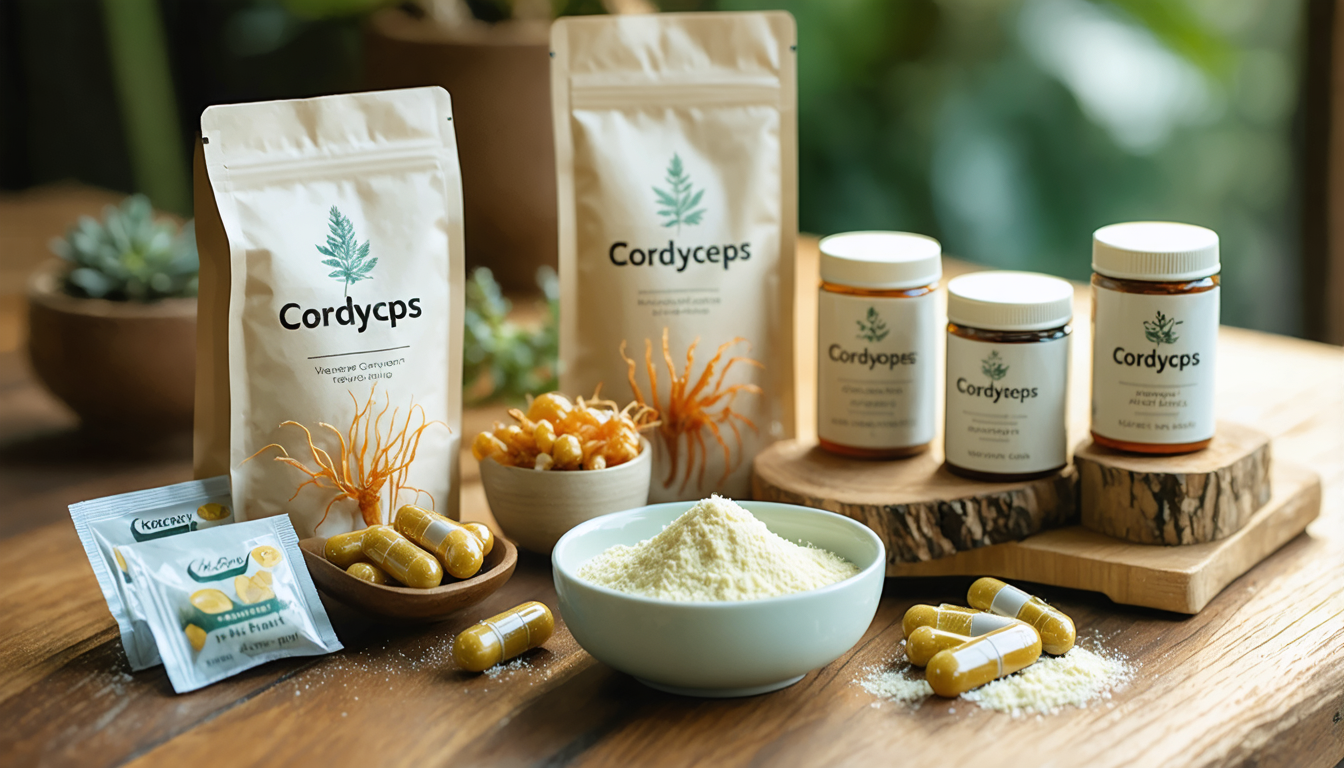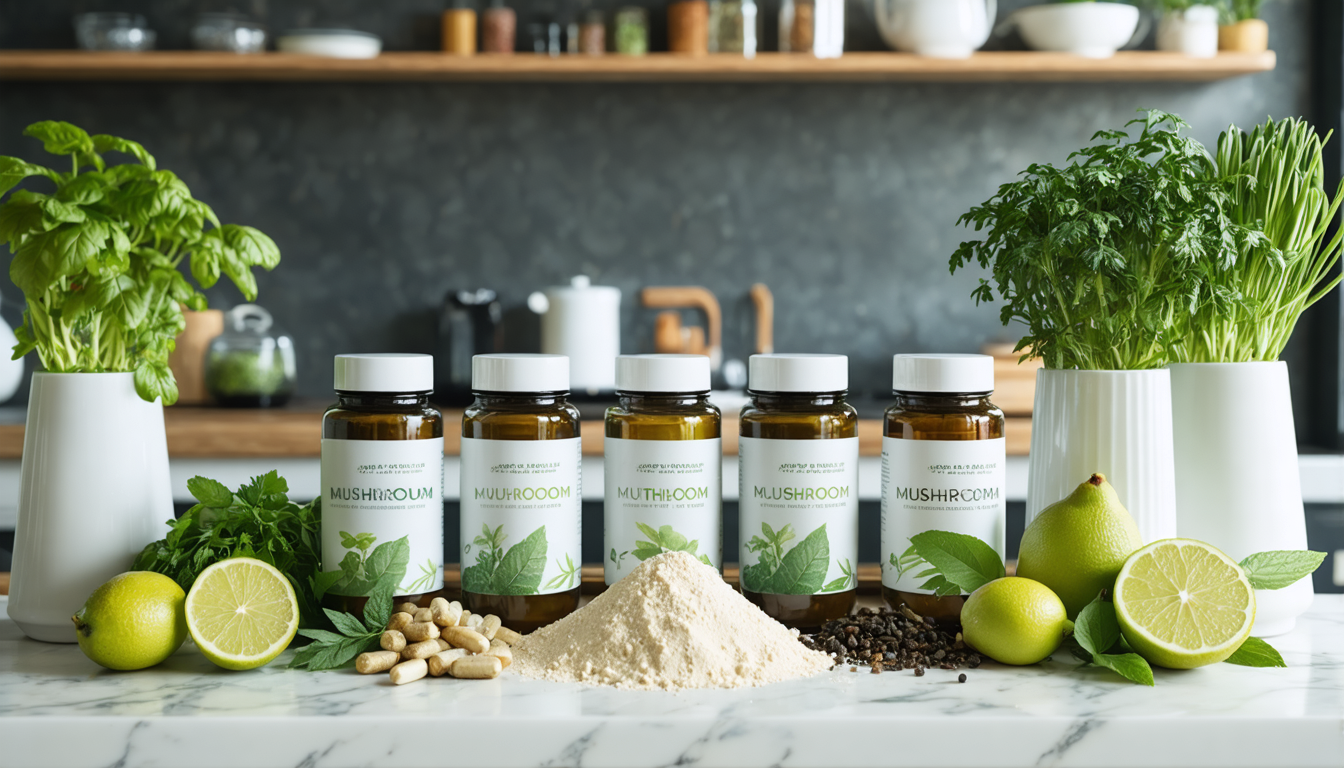Cordyceps, often referred to as the "caterpillar fungus," is a prized medicinal mushroom with centuries of use in traditional medicine. Its reputation spans across cultures, from the Himalayan mountains to global modern wellness markets. This guide explores the rich history, traditional applications, and innovative ways Cordyceps is produced and utilized today, including the emergence of modern cultivation methods. Cordyceps and its role in traditional medicine1
External Links and Queries:
- Cordyceps and its role in traditional medicine
Query: "What is the historical and cultural significance of Cordyceps in traditional medicine?"
Cordyceps, known as the “caterpillar fungus,” has been used for centuries in traditional Chinese and Tibetan medicine to boost energy, improve respiratory health, and support immunity. Modern advancements in cultivation and extraction techniques have turned Cordyceps into a sustainable and potent supplement used worldwide for energy enhancement, recovery, and overall wellness.

Historical and Cultural Significance
Cordyceps holds a legendary status in traditional medicine systems for its powerful therapeutic properties.
Cordyceps in Traditional Medicine
- **Tibetan Medicine: Used for enhancing stamina and countering altitude sickness in the harsh Himalayan environment. Tibetan Medicine and its use of Cordyceps2
External Links and Queries:
- Tibetan Medicine and its use of Cordyceps
Query: "How is Cordyceps used in Tibetan Medicine to enhance stamina and counter altitude sickness?"
- Traditional Chinese Medicine (TCM): Prescribed to restore balance to the body’s “Qi,” Cordyceps supports kidney and lung health and helps combat fatigue and chronic respiratory issues.
- Ayurveda: Known for its adaptogenic qualities, Cordyceps is considered a vital tonic for rejuvenating the body and managing stress.
Cultural Recognition
- Cordyceps became globally recognized after Chinese athletes attributed their record-breaking performance in the 1993 Olympics to consuming Cordyceps supplements.
Medicinal Benefits: A Blend of Ancient Wisdom and Modern Science
Cordyceps offers a wide range of scientifically supported health benefits:
1. Enhancing Energy and Stamina
Cordyceps boosts ATP production, improving physical endurance and reducing fatigue.
| Benefit | Bioactive Compound | Mechanism |
|---|---|---|
| Improved Stamina | Cordycepin | Enhances mitochondrial efficiency |
| Better Endurance | Polysaccharides | Increases oxygen utilization |
Supporting Research
- Study 1: A clinical trial published in Medicine & Science in Sports & Exercise (2016) showed improved VO2 max and physical performance in subjects using Cordyceps militaris. DOI:10.1249/MSS.0000000000000908
2. Respiratory Health Support
Cordyceps serves as a natural bronchodilator, easing respiratory inflammation and improving airflow.
| Condition | Benefit |
|---|---|
| Asthma | Reduces inflammation |
| Chronic Cough | Improves lung function |
Supporting Research
- Study 2: Published in the Journal of Ethnopharmacology (2019), the study demonstrated Cordyceps’ ability to reduce inflammation in the respiratory tract. DOI:10.1016/j.jep.2019.111024
3. Immune System Enhancement
Cordyceps strengthens the immune system by stimulating macrophages, T-cells, and natural killer (NK) cells.
| Immune Benefit | Bioactive Component |
|---|---|
| Immune Activation | Polysaccharides, Cordycepin |
| Reduced Infections | Enhanced macrophage function |
Supporting Research
- Study 3: A 2020 study in Frontiers in Pharmacology highlighted Cordyceps’ immunomodulatory properties. DOI:10.3389/fphar.2020.00355

Modern Applications and Innovations
Cordyceps has moved beyond its traditional roots, thanks to technological advancements that make it accessible, potent, and sustainable.
1. Cultivation Innovations
- Wild Cordyceps Challenges: Overharvesting has made Cordyceps sinensis rare and expensive.
- Cordyceps Militaris Cultivation: Modern techniques allow mass production in controlled environments, making it affordable and sustainable while preserving efficacy.
CS4 Cultivation
CS4 is a strain of Cordyceps sinensis, developed through cultivation techniques that mimic the wild-growing conditions, allowing for large-scale production without harming the environment. CS4 is now widely used for supplement production due to its potent health benefits, including boosting energy and enhancing immune function.
Cordyceps Militaris Cultivation
Cordyceps militaris is commonly cultivated in controlled lab environments, using a combination of substrates like rice or grains. This strain, known for its orange-yellow color, is cheaper and more abundant than C. sinensis and has been proven to contain similar therapeutic properties, especially in immune modulation and energy enhancement.
| Species | Cultivation Method | Main Benefits |
|---|---|---|
| Cordyceps sinensis | Found in high-altitude areas, wild-harvested | Liver protection, anti-fatigue |
| Cordyceps militaris | Cultivated on rice or grains in controlled environments | Enhanced stamina, immune support |
| CS4 | Cultivated using traditional methods on substrates like rice | Immune boosting, anti-aging |
2. Applications in Wellness
Cordyceps is used in various forms for targeted health benefits:
- Energy Boost: Capsules and powders are popular pre-workout supplements.
- Functional Beverages: Coffee blends with Cordyceps are trending in the wellness industry.
- Skin Health: Extracts are included in skincare for anti-inflammatory benefits.
| Product | Use Case |
|---|---|
| Capsules | Boost daily energy and recovery |
| Powders | Easy integration into smoothies |
| Liquid Extracts | High-potency immune boosters |
3. Cordyceps in Pharmaceuticals
- Ongoing research explores Cordyceps for anti-cancer properties, liver protection, and managing diabetes.
- Cordyceps-derived cordycepin is being studied as a potential therapeutic agent for cancer due to its ability to inhibit tumor growth.
4. Cultivating Cordyceps on Rice and Other Substrates
- Rice Cultivation: One of the most significant modern advances in Cordyceps production is the use of rice as a substrate for growing Cordyceps militaris. This method is scalable, environmentally friendly, and economical, addressing the challenges posed by wild-harvested Cordyceps.
- Other Substrates: Researchers have also experimented with other substrates such as oats, barley, and even bagasse to cultivate Cordyceps, allowing for the production of high-quality products on a larger scale.

Global Market and Recognition
Cordyceps is a key player in the global wellness market:
- China and Asia: Leading production hubs for Cordyceps militaris and sinensis.
- Western Markets: Growing demand in sports nutrition and functional foods.
- Market Trends: The Cordyceps industry is projected to grow at a CAGR of 6.5%, driven by increasing interest in natural and sustainable health solutions.
Conclusion
Cordyceps has transitioned from a revered traditional remedy to a modern-day wellness staple. Its therapeutic properties, sustainable cultivation, and versatile applications ensure its prominence in the global health landscape for years to come. With advancements in cultivation techniques, including the use of substrates like rice, the future of Cordyceps looks brighter than ever.









